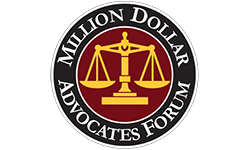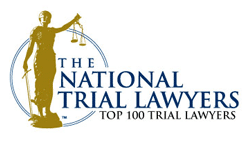While buying a home is a dream for many Americans, it’s not uncommon for financial struggles to result in homeowners losing their property. Expenses like astronomical medical bills and credit card debt can make paying regular mortgage payments insurmountable. If you’re currently unable to follow through with the terms of your lending agreement, you’ll benefit from speaking to a Baltimore bankruptcy foreclosure lawyer from Belsky & Horowitz, LLC.
According to the Federal Deposit Insurance Corporation (FDIC), the federal agency that insures deposits in U.S. banks and thrift associations in the event of institutional failures, one out of every 200 homes will be foreclosed on. This means that approximately every three months, 250,000 new families enter into foreclosure. This not only costs a family their home, but it also imposes thousands of dollars in direct costs on local government agencies.
If you are unable to continue to pay your mortgage and are worried about a lender taking this form of legal action, it’s important to understand the process, applicable state laws, and whether you have any other options. Let’s start by taking a look at what foreclosure is and how it works.
Understanding Foreclosure
Foreclosure is a legal process that allows a lender to take control of a property, evict a homeowner, and sell the home if the owner is unable to make full principal and interest payments on their mortgage. The terms that the homeowner has to abide by are stipulated in their mortgage contract. Defaulting on the contract gives the mortgage lender the right to foreclose on the property.
When a borrower fails to make a loan or mortgage payment on time, the loan becomes delinquent. If the borrower fails to make a payment at all, that’s when a default occurs. Approximately three to six months after a homeowner misses a mortgage payment, assuming payments are still delinquent and the homeowner has not made up any missed payments within the established grace period, the lender will begin the foreclosure process.
The further a homeowner falls behind on payments, the harder it is to catch up. This is because of the late fees that lenders add to payments. While late fees vary, they are typically assessed after 10 to 15 days of a missed payment.
It’s best to work with a bankruptcy foreclosure attorney with complex legal matters. If you’re in the midst of being unable to afford your mortgage or loan payments, representation is key. The right attorney will be able to explain your rights to you and ensure you understand the process.
Maryland Foreclosure Laws and Procedures
Every state has laws in place that regulate the foreclosure process. An official foreclosure is typically the final step in a long pre-foreclosure process, so it’s important to understand the process in your state and how the applicable laws could impact your situation.
If you’re dealing with foreclosure as a resident of Maryland, Belsky & Horowitz, LLC can help you with the process and ensure the lender does not take advantage of your situation. We can also advise on foreclosure alternatives, depending on the circumstances of your financial problems.
The foreclosure process starts with a homeowner defaulting on their payments. The homeowner will receive a Notice of Intent to Foreclose and a loss mitigation application in the mail. The Notice of Intent letter is something the lender must send before filing papers with the court. The loss mitigation application outlines ways a homeowner may avoid having a lender sell their home. For example, the homeowner may be eligible for a loan modification.
If the process proceeds to court, the homeowner will receive a copy of the Order to Docket in the mail. This includes information about the loss mitigation paperwork and whether loan modification is an option. The owner has 15 days to file a preliminary motion to dismiss and 25 days to file a request for mediation.
If the foreclosure sale happens, the homeowner must be informed of the sale date at least ten days prior. The sale takes place on the courthouse steps and the owner is not required to move until the court awards legal possession to a new owner. The homeowner can challenge the sale of their home by filing exceptions within 30 days of the sale—which have to do with problems in how the home was sold. Once the court approves the sale and all documents are filed, a sheriff will schedule a time for eviction.
In addition to state laws, it’s important to note that there are federal laws in place that provide protection to homeowners before and during the foreclosure process. This includes the right to seek damages after foreclosure in the event the lender violated certain laws. For example, a foreclosure generally cannot start until the borrower is more than 120 days late on payments. If a lender starts the foreclosure process only 30 days after a homeowner defaults, they can be held accountable.
In these situations, it’s best to have a foreclosure lawyer on your side who will know the laws that apply to your case. These situations can become complex, especially when a lender is sending conflicting information. Let’s take a look at a situation where a tenant was given multiple notices about her housing status and the legal action she took.
Examining the Case of Judy Curtis v. U.S. Bank National Association
After her landlord defaulted on a mortgage payment, Judy Curtis was given confusing information about her status as a tenant. The U.S. Bank National Association (USBNA) owned the debt and had foreclosed on the property. They decided to end her lease. When they sent her notices about this update, they had filed a motion for immediate possession of the property. However, they did not give her 90 days notice.
This is in violation of the Protecting Tenants at Foreclosure Act (PTFA). A federal act, the PTFA states that the purchaser needs to inform the tenant if the tenant will need to leave. The notice should inform the tenant of the following rights:
- The tenant may occupy the residence for the remainder of the lease.
- The tenant may stay on the property for 90 days if there isn’t a lease or the lease was terminable at will.
There are a few requirements for the PFTA to be enacted. The foreclosure needs to take place after the PFTA was made, the mortgage needs to be federally-insured, and the person receiving the notice needs to be a bona fide tenant.
In Curtis’ case, Curtis received the following information in three notices:
- She had to leave the property immediately.
- If she stayed, she would face legal action if she was not out by a certain date.
- She was considered a bona fide tenant, but was still going to need to leave the property.
Curtis went to the Court of Appeals, which stated that the notices would have confused anybody. The information also could indicate the USBNA didn’t know the federal rights that applied to this situation. They ruled the USBNA did not comply with the PFTA. They also said the USBNA did not have the right of possession when they filed for immediate possession, making it premature.
This process can be intimidating to do on your own. Even lender may not be aware of the rights you have. This is why it’s essential to have a bankruptcy foreclosure lawyer as representation. They’ll be able to catch any inconsistencies or violation of your rights.
Bankruptcy and Other Ways to Avoid Foreclosure
You may be able to prevent a foreclosure on your home. Common defense tactics against this include the following:
- Bankruptcy. If you decide to file a Chapter 7 or Chapter 13 bankruptcy petition, the court will issue an automatic stay. This means that creditors have to stop all collections and foreclosure proceedings. This will give you time to determine how you will pay off your debts and whether you can realistically catch up on your mortgage and continue to make payments.
- Mortgage Modification. If a lender approves your loss of mitigation application, a lawyer can help you negotiate with your bank for revised terms of your mortgage. This will allow you to make smaller, more manageable monthly payments. If your mortgage is the only debt causing financial trouble for you, mortgage modification can help you avoid foreclosure and bankruptcy.
- Short Sale. If you owe more money than your home is worth, you may want to consider a short sale. Depending on your lender, the bank could approve the sale of your home for less than its value and forgive any remaining debt.
- Procedural Defenses. Because of the number of laws and how complex the process is, it’s not uncommon for lenders to make mistakes that can nullify a foreclosure. That’s why it’s so important to work with a lawyer who understands your legal rights and the lender’s obligations.
Your foreclosure attorney will be able to go over the options available to you. We’ll work with you to find a plan that helps you move forward.
Discover Your Legal Options Today
We understand the stress associated with foreclosure, and we know it can be impossible to manage without the proper legal guidance. That’s why contacting a Baltimore bankruptcy foreclosure lawyer is in your best interests if you are at risk of losing your home due to missed payments.
If you believe bankruptcy is the option for you, we can help with that process as well. No matter the circumstances that resulted in your financial problems and debt, our attorneys will help you decide how best to proceed to protect your future and rebuild your financial health. Contact us today to learn more.





